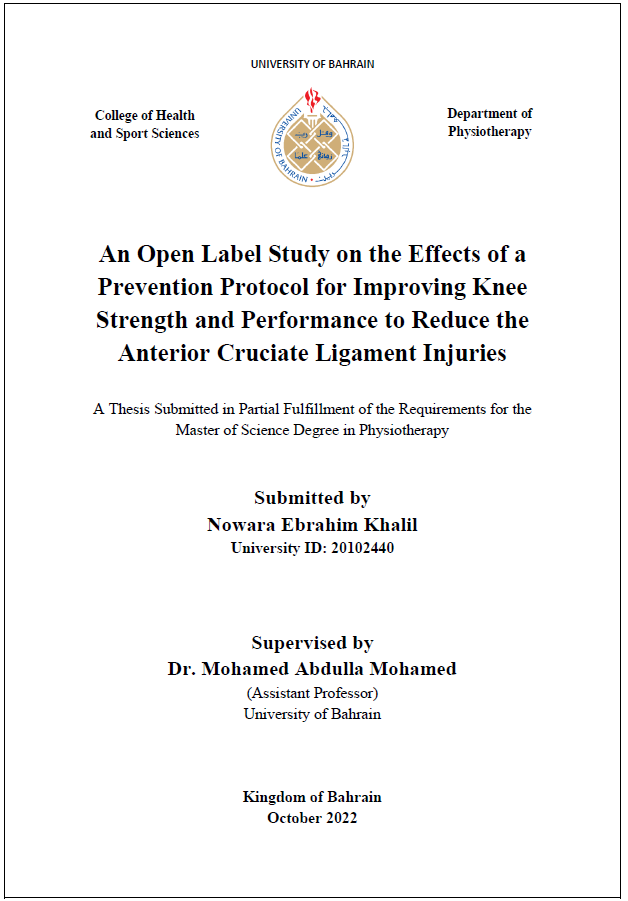Document
The Effect of Sacroiliac Joint Intervention on Ipsilateral Knee Pain in Females with Chronic Sacroiliac Joint Dysfunction
Linked Agent
Alkhabaz, Yusuf, Thesis advisor
Date Issued
2022
Language
English
Extent
[1], 17, 136, [1] pages
Subject
Place of institution
Sakhir, Bahrain
Thesis Type
Thesis (Master)
Institution
"UNIVERSITY OF Pittsburgh , College of Health Sciences
English Abstract
Abstract:
Introduction: The sacroiliac joint (SIJ) plays a key role in effective load transfer between the spine and lower limbs. SIJ dysfunction can explain 18.5-40% of low back pain (LBP), but it is usually overlooked. LBP, in general, had been correlated with developing new knee pain, but the same thing was not investigated for SIJ dysfunction. Purpose: This study aimed to estimate the prevalence of ipsilateral knee joint pain among females aged 40 to 65 years old with chronic SIJ dysfunction. Another aim was to measure the effect of treating chronic SIJ dysfunction on SIJ dysfunction pain and ipsilateral knee pain. Methodology: A quasi-experimental study design was followed. A total of 72 female patients with chronic SIJ dysfunction were screened for the presence of ipsilateral knee joint pain. The intensity of SIJ pain and knee pain was measured using the Numerical Pain Rating Scale. Patients with SIJ dysfunction and knee pain received exercises and taping for SIJ pain for eight sessions over four weeks. Dependent t-test was used to measure the difference between the mean of SIJ dysfunction pain and ipsilateral knee pain before and after SIJ treatment. All statistical analysis was performed using the Statistical Package for Social Sciences (SPSS) (version 24). Results: Out of 72 female patients with chronic SIJ dysfunction, 42 were found to have ipsilateral knee pain. After the SIJ dysfunction intervention, there was a significant improvement in SIJ dysfunction pain and knee pain compared to baseline (p<0.001) in 38 patients aged (50.0±6.8 years Mean±SD). Conclusion: Ipsilateral knee pain is prevalent among female patients with SIJ dysfunction. An intervention directed to SIJ dysfunction consisting of core and hip muscle strengthening and taping can improve both SIJ dysfunction and ipsilateral knee pain. The stability provided by muscle strengthening and taping enhances the stability of the proximal parts for optimal function of the lower limb including the knee.
Member of
Identifier
https://digitalrepository.uob.edu.bh/id/d4e1a040-e2a7-40a7-9d71-4056c34e242e
https://digitalrepository.uob.edu.bh/id/d4e1a040-e2a7-40a7-9d71-4056c34e242e
Same Subject
